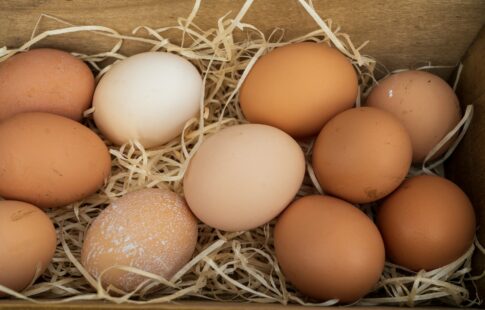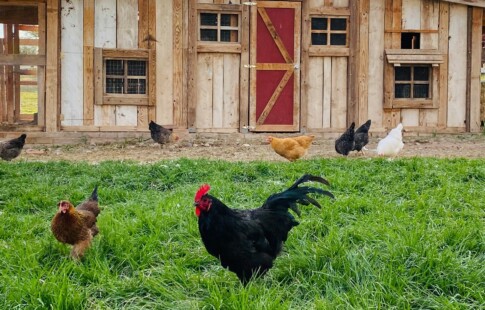
What Herbs Can Grow Together Best?
We are reader-supported. When you buy through links on our site, we may earn affiliate commission.
Having fresh herbs at your fingertips greatly benefits at-home cooks and avid gardeners. In addition to enhancing your signature dishes with an assortment of flavors, some serve as natural pest repellants or may be used for medicinal purposes. The National Library of Medicine lists 75–100 herbs as aids for ailments and injuries.
Many herbs can also be grown side by side if you’re dealing with a small space. Of course, some herbs are better off growing alone.
If you’re wondering what herbs can grow together best, this guide will help you pair them properly for a thriving herb garden.
What Is Companion Planting?
Before you bury seeds together in your garden bed, pots, or vegetable trug, it’s essential to know what companion planting means. Companion planting is discovering what plants complement each other in pairs or groups. Generally, plant varieties that prefer similar growing conditions make excellent companions.
For example, experienced producers know that squash, beans, and corn grow very well together. When it comes to planting herbs, you can apply a similar science.
Some of the benefits of companion planting include:
- Saving space in your garden
- Averting pest infestations
- Attracting beneficial insects
- Supporting the companion plant’s height without stakes or trellises
- Improving soil fertility
The agricultural sector has long utilized crop rotation to maintain soil quality for continuous plant growth. In your backyard, these techniques restore soil nutrients and reduce the need for synthetic fertilizers.
4 Categories of Herbs
Herbs typically get separated into four categories: Mediterranean, moisture-loving, lemon-scented, and mints. Each type has specific growing conditions — therefore, it’s best to grow plants with like-minded herbs within each category.
1. Mediterranean Herbs
Mediterranean herbs — rosemary, lavender, sage, marjoram, thyme, and oregano — prefer ample sunlight and drier soil conditions. While some herbs do better alone, they’ll still thrive when planted together.
2. Moisture-Loving Herbs
The only thing Mediterranean and moisture-loving herbs have in common is their love of sunlight. Otherwise, moisture-loving herbs prefer wetter soil. Two of the most familiar moisture-loving herb pairing are basil and parsley.
3. Lemon-Scented Herbs
Lemon verbena, lemon balm, and lemon thyme can also be grown together in a pot or the ground. Most often, lemon-scented herbs require well-drained soil. However, keep in mind that while lemon balm can tolerate partial shade, lemon verbena and lemon thyme will only thrive in full sunlight.
4. Mints
Mints are an exception to companion planting herbs. When it comes to mint, it’s best to keep them separate from other plants. Mints tend to be aggressive growers and often overtake nearby herbs. One of the best ways to contain mint is growing it separately in a pot.
You can grow different types of mints together, though. For example, spearmint, peppermint, orange mint, and chocolate mint will fair well together as long as they have room to spread out.
Herbs Pairings for Your Garden
Knowing what herbs can grow best together takes some trial and error. There are so many herbs that flourish alongside each other. Fortunately, growing herbs has gone on long enough for us to know about ideal herb pairings. Here are some pairings you’ll want to consider for your herb garden.
Rosemary and Lavender
Rosemary is somewhat finicky about which herbs it gets planted next to — most often, it grows best next to vegetables. However, there is one herb that complements rosemary well: lavender.
Lavender and rosemary are two of the most fragrant herbs with a wide range of medicinal, culinary, and ornamental benefits. Both plants grow best in drier soil and can improve soil drainage and aeration together. They’re also enticing for bees and butterflies, enhancing your garden’s pollinator population.
Some might say these two herbs don’t play nicely with others, while others would agree that they make a powerful team in an herb garden.
Parsley and Basil
The two most popular moisture-loving herbs — parsley and basil — grow exceedingly well next to each other.
Basil and parsley have similar growing conditions — both need direct, hours-long sunlight and wetter soil. They’re also great at preventing whiteflies, aphids, and hornworms from infesting other plants in the garden.
Parsley, in particular, attracts beneficial bugs like tachinid flies and ladybugs. Tachinid flies are parasites that destroy caterpillars, cucumber beetles, Japanese beetles, Colorado potato beetles and Mexican bean beetles the same way parasitoid wasps do — by laying their eggs inside or on the pest.
Meanwhile, aphids are likely to attract a host of ladybugs, so it’s best to wait and see if beneficial bugs will correct your pest problem before using pesticides.
Dill and Cilantro
Dill is a potent herb that enhances other plants’ health and attracts hornworms to themselves, protecting other plants from infestations. Otherwise, dill is effective at enticing butterflies, ladybugs, bumble bees, wasps, hoverflies, and the praying mantis — these beneficial bugs dissuade pests like aphids and spider mites.
Nicknamed “Mexican parsley,” Cilantro is another herb known for having a pungent smell that attracts good bugs and discourages bad ones.
Cilantro grows well alongside all herbs, including dill, except fennel. It also tends to grow nicely during cooler seasons for year-round freshness.
Thyme and Oregano
Technically, thyme can grow alongside several herbs, including sage, lavender, and even rosemary. Oregano is especially complementary to thyme.
Despite being of the mint family, thyme is a fast grower that maintains its short stature of six to 12 inches — however, it can spread one to two feet.
Thyme prefers drier, sandier soil and full sunlight. With high potency, it repels harmful pests and attracts several types of pollinators during the spring and summer months.
Being that oregano is another Mediterranean herb with similar growing needs, it tends to flourish well next to thyme. Additionally, thyme’s height provides shade to the oregano, which helps maintain soil moisture for the oregano to grow.
Plant Your Own Herb Garden
Figuring out what herbs can grow best together can be tricky, even for experienced gardeners. However, don’t get discouraged. You can find complementary herb pairings that thrive in your garden with a bit of practice and experimentation.
Share on
Like what you read? Join other Environment.co readers!
Get the latest updates on our planet by subscribing to the Environment.co newsletter!
About the author
Steve Russell
Steve is the Managing Editor of Environment.co and regularly contributes articles related to wildlife, biodiversity, and recycling. His passions include wildlife photography and bird watching.





